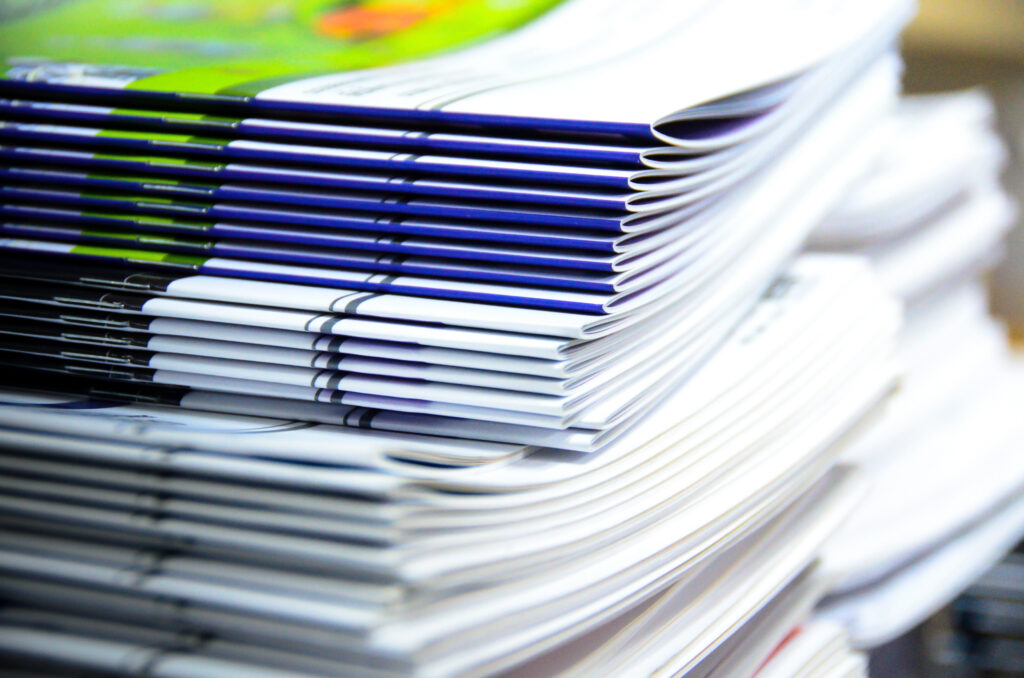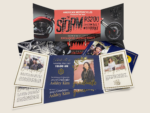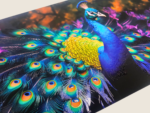Saddle stitch vs perfect bound, perfect binding vs saddle stitching, what is the difference?
When it comes to book binding, choosing the right method is important to achieving the desired look, feel, and durability. Two popular options for bookbinding are saddle stitching and perfect binding, each offering distinct advantages depending on the project’s needs. Whether you’re working on a catalog, brochure, or book, understanding the difference will help you make an informed decision. In this blog, we’ll dive into the key differences between saddle stitched and perfect bound books. Let’s review their unique characteristics, benefits, and when to choose one over the other.
What is Saddle Stitching?
Saddle stitching involves stapling the cover and inner sheets together along the spine with 2-4 stitches, then folds them in half to create the finished book. It’s most commonly used for programs, newsletters, and calendars. Saddle stitching is the most economical option and it’s accomplished with a saddle stitch or bookletmaking system.
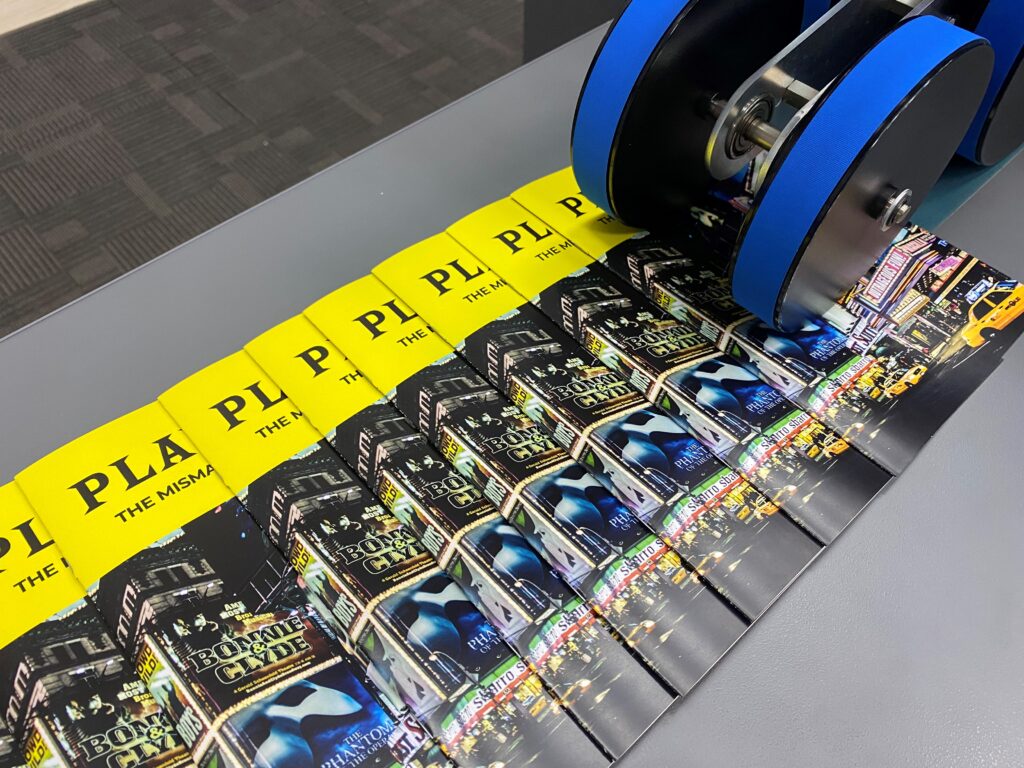
What is Perfect Binding?
Perfect binding involves gluing the book block (inner sheets) to a soft cover along the spine. This is going to be more suitable for thicker book applications, such as paperback books and catalogs. The end-product results in a square-back spine that makes stacking easier. The cover is typically thicker than the inner pages, often with spot coating for added effect, and print on the spine.
The process begins by roughening the spine of the book block to help the glue adhere. Two common glues used are: PUR (Polyurethane Reactive) and EVA (Ethylene Vinyl Acetate).
While perfect bound books offer a professional, high-quality finish, they are more labor-intensive to produce. The covers must be creased to prevent toner cracking, and once the glue has cured, the books need to be three-side trimmed for a polished look. Although perfect binding is a more costly option, it provides a refined appearance and is accomplished using a specialized perfect binder machine.
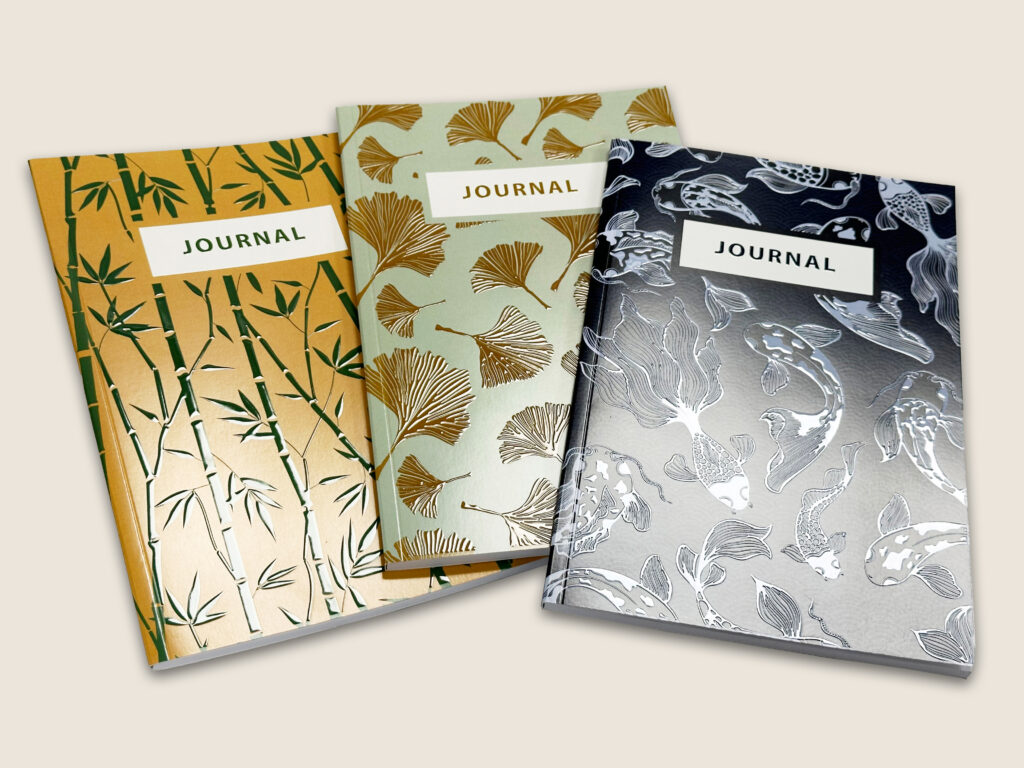
Check out the process of producing perfect bound books utilizing Duplo equipment:
Get the Perfect Bound Look with the Duplo DBM-700 Bookletmaker
That said, the latest generation of Duplo bookletmaking systems are capable of producing saddle-stitched booklets with a perfect bound look. The DBM-700 Bookletmaker, available in the 700i Booklet System and 700i Pro Digital Booklet Systems, produces thicker booklets up to 50 sheets. With the optional square back module, you can achieve a professional square-back finish. All of this is done in-line and on demand, offering unmatched efficiency and cost-savings.

How to Choose Between Perfect Bound vs Saddle Stitch?
Saddle stitching is ideal for projects with fewer pages—under 100 total pages or 50 sheets folded in half. It’s perfect for catalogs, brochures, or other marketing booklets. Keep in mind that when the cover and inner pages are made from the same stock, they may not be as durable.
Perfect binding, on the other hand, is better suited for thicker materials like books, larger catalogs, or journals. It offers greater durability, allows for printing on the spine, and can handle more wear and tear. Perfect binding also opens up creative possibilities for the design of the spine and cover.
Ultimately, your choice between saddle stitching and perfect binding depends on your project’s page count, durability needs, aesthetic goals, and budget. For short, budget-friendly jobs, saddle stitching will likely suffice, while perfect binding is the better option for longer, more durable products that need to make a lasting impression.
Things to Consider When Choosing Your Binding Method
When selecting the binding method for your next project, keep these factors in mind:
- Budget – If cost is a concern, saddle stitching is the most affordable option.
- Durability – For books that need to last or be shared often, choose perfect binding. It offers greater durability. Saddle stitching works well for short-lived projects, like seasonal books or those meant for limited use.
- Aesthetics: Perfect binding gives a traditional, polished look commonly found in books and larger magazines. If this style is important to you, perfect binding is the better choice.
Both saddle stitching and perfect binding have been staples in the printing industry for years. If you want to bring binding in-house, consider the fully automated Duplo 700i Booklet System, which can create square-back books with up to 50 sheets, or the DPB-500 Perfect Binder which produces books up to 2″ thick.

